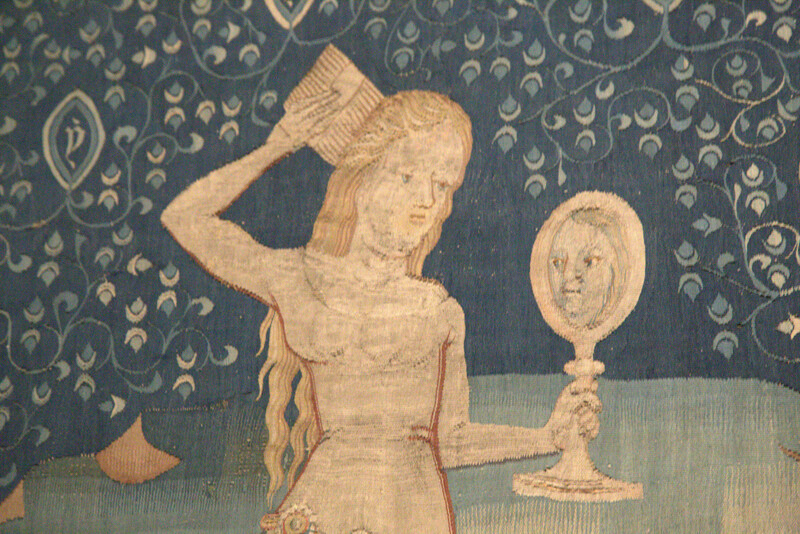Apocalypse Tapestry, Angers
Type:
Tapestries
Date:
ca. 1377 to 1382
Location or Findspot (Modern-Day Country):
France
Medium:
Wool
Dimensions:
each panel originally 6 × 23 m (now approx. 4.5 m tall)
Description:
Beginning in the late fourteenth century in France and Flanders (roughly, modern Belgium and Luxembourg), tapestries became a major art form. They were woven in large commercial workshops staffed exclusively by men. The largest surviving medieval tapestry is preserved at Angers, where it was displayed in the cathedral on important occasions. Designed and woven between about 1377 and 1382, it originally consisted of six pieces, each 23 meters wide and 6 meters high; 65 of the original 84 scenes survive. The patron of the work, whose heraldry is repeated numerous times, was Duke Louis I of Anjou (1339–1384), brother of the French king and of the famous art collector Jean, duke of Berry, patron of the Très Riches Heures.
The woolen tapestry depicts episodes from the book of Revelation and is therefore known as the Apocalypse Tapestry. Each pieces begin at the left with an ornate architectural structure containing a large figure who holds a book or scroll. He represents St. John the Evangelist, the author of Revelation but also a model “reader” of the tapestry’s images. To his right the scenes are disposed in two registers with alternating red and blue backgrounds. The Apocalypse subject matter is unique among contemporary tapestries; patrons generally favored scenes from mythology, romance, or history.
The woolen tapestry depicts episodes from the book of Revelation and is therefore known as the Apocalypse Tapestry. Each pieces begin at the left with an ornate architectural structure containing a large figure who holds a book or scroll. He represents St. John the Evangelist, the author of Revelation but also a model “reader” of the tapestry’s images. To his right the scenes are disposed in two registers with alternating red and blue backgrounds. The Apocalypse subject matter is unique among contemporary tapestries; patrons generally favored scenes from mythology, romance, or history.
Relevant Textbook Chapter(s):
10
Repository and Online Resources:
• The Apocalypse Tapestry is housed at the Castle of Angers. See the Whore of Babylon in high resolution or augmented reality.
• Watch a video about contemporary tapestry weaving here.
• Read about how medieval tapestries were made.
• Watch an introduction to the Apocalypse Tapestry here (in French, with subtitles).
Image Credits:
Linda Safran





